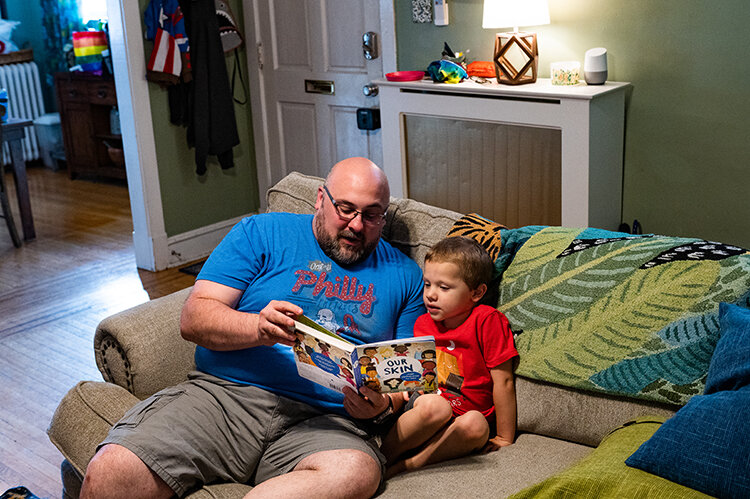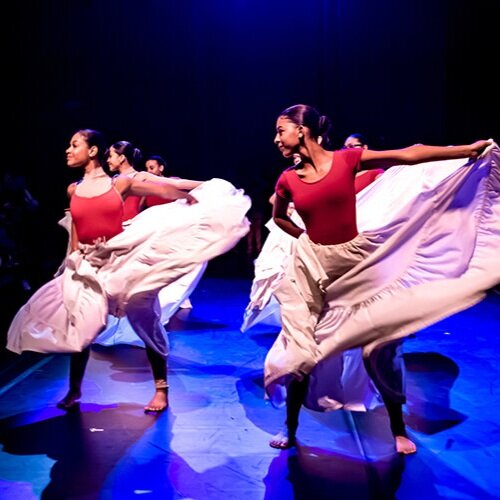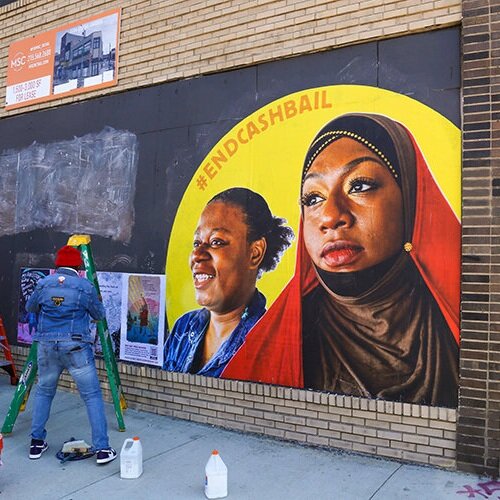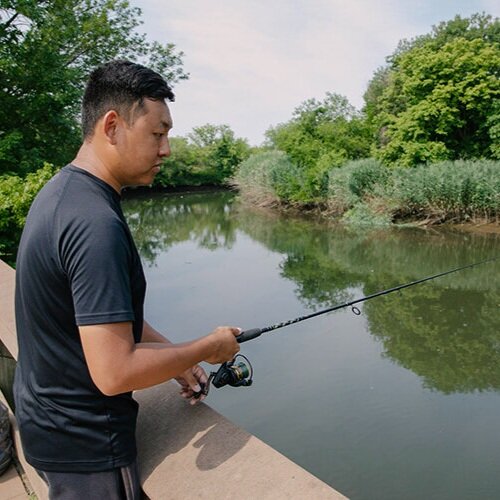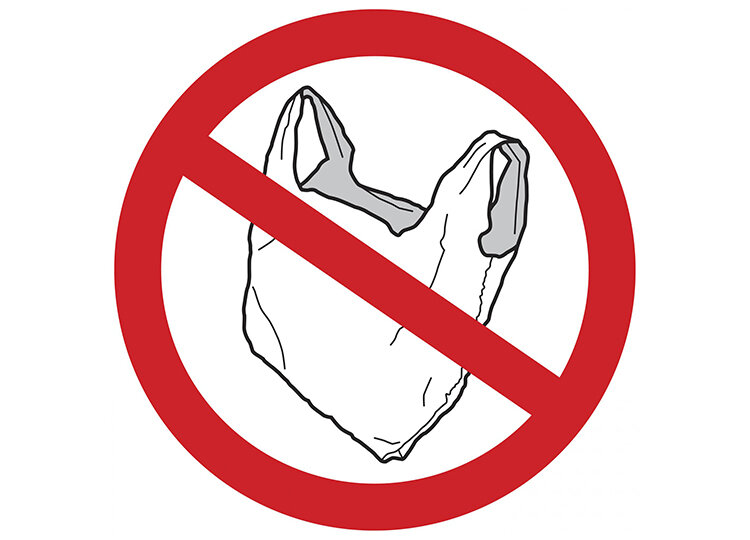There’s not a moment to lose, according to Ben Sand, 40, author of the 2020 book “A Kids Book About White Privilege.”
“By 2045 the majority of children born in the United States will be children of color,” says Sand, of Portland, Oregon, who reports receiving death threats for writing the book. “Today’s young people will parent that generation, so we need to work on anti-racism now.”
In Philadelphia, Mike and Amanda Finnell, a white couple, 38 and 37, respectively, felt an urgency to introduce their 3-year-old son Wesley to anti-racism.
“I grew up in South Central Pennsylvania,” says Amanda, an executive with a Philly nonprofit. “Few Black people lived nearby, and my family didn’t discuss race, but I sensed the importance of anti-racism because of another situation. I had two moms, and kids assaulted me and put chewing gum in my hair because of it.”
She saw a parallel with racism.
“Mike and I choose to live in Mount Airy because it’s diverse,” Amanda explains. “Wesley has playmates of different ethnicities. We also found a Black woman–owned daycare with a STEM program, which supports the owner and brings more Black and Brown kids into Wesley’s life.”
Mike, an IT director at a local university, grew up in the largely white town of Croydon, Bucks County. He recalls few family conversations about race, however he makes it a point to discuss it with Wesley.
“We read Wesley books like ‘Our Skin: A First Conversation About Race,’ ” he says. “When Wesley’s older, we’ll talk about why his Black friends are more likely to be stopped by the police than he is. It’s an ongoing process.”
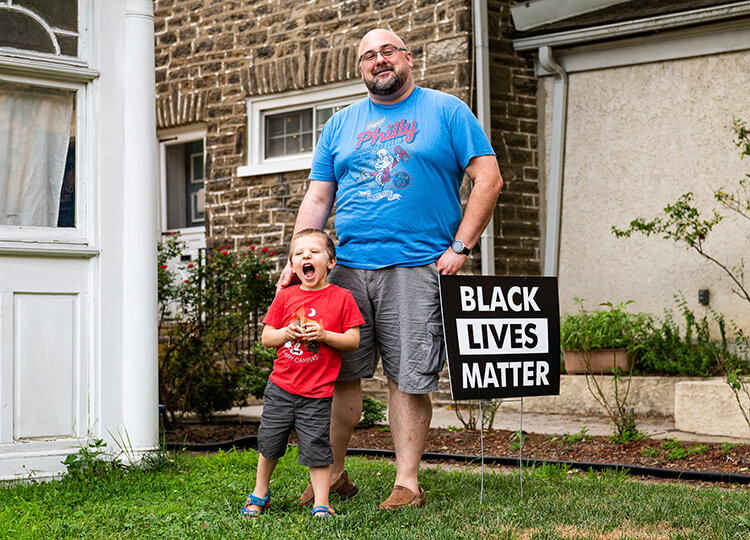
Like the Finnells, many parents favor an anti-racist education for their children, but they have no road map.
“For white people living in North America, learning to be anti-racist is a re-education process,” writes Jona Olsson, 74, founder of Cultural Bridges to Justice, a social justice organization, in her essay “Detour-spotting for white anti-racists.”
“This journey sends us into unfamiliar territory … None of us has ever been taught the skills of anti-racist living.”
Jen Bradly, 52, co-founder of the interracial Philly Children’s Movement (PCM), a collective organization of families and educators “rising up for racial justice” agrees.
“Most white people weren’t taught to have these conversations,” says Bradley, a visiting assistant professor of education at Swarthmore College.
That said, Philadelphia parents can draw on resources here to bring anti-racism into their children’s lives, as the Finnells did. And local and national experts and organizations can bolster their efforts.
“Start with ‘the ghosts on your shoulder,’” says anti-bias lecturer, consultant and author Debbie LeeKeenan, of Seattle, former director at Tufts University’s childrens school in Medford, Massachusetts.
“We should be aware of our own history, heritage and biases,” says LeeKeenan, whose 50 years in early childhood education include a stint in Philadelphia. “We want to avoid letting our biases impact our interactions. Self-awareness is critical to be fully present and intentional with others.”
PCM’s Bradley recommends that parents curate the media they consume.
“Films, books and social media accounts from BIPOC content creators can help families disrupt their bias and become more culturally fluent,” says Bradley, a mother of four who, years ago, sought a family-friendly way to protest racism. She and like-minded parents founded PCM as a result.
Parents may wonder when to start discussing race.
“We recognize that very young children are observing, experiencing and actively making sense of social identities and biases,” says LeeKeenan. Experts emphasize that if parents respond with embarrassment or silence or change the subject, it gives children the message that something’s wrong or that the topic is taboo.
Bradley advises parents to “… get comfortable with being uncomfortable.” Some questions may be unsettling, she notes, but it’s important to explore the conversation.
“If you can’t answer a question, buy yourself time,” says LeeKeenan, the daughter of Chinese immigrants and married to an Irish-American man. “Say something like, ‘That’s a good question. I need to think more about how we can talk about it together.’ ”
When children don’t bring up questions about race, parents can start the conversation, notes Randi Boyette, education director for the Anti-Defamation League Philadelphia.
“The tips and lesson plans are scaffolded according to the child’s age or grade,” Boyette says.
Sand stresses the importance of kids’ understanding of white privilege and proposes a four-step approach to addressing it. “I explain that it means unearned advantages,” he says. “It means that you’re ahead of your [Black or Brown] friend just because you’re white.”
In step two, he encourages white kids to listen to kids of color in order to learn about their lives.
Sand then asks children to consider the possibility of giving up some of their white privilege. “For example, white children could learn about a leader of color and raise funds for that leader’s organization,” Sand says. “The money could be from their allowance or from a lemonade stand. Kids would learn about the issue the organization addresses and use networks to which people of color might not have access to support that group’s work.”
“This step is harder for parents than for kids,” he says. “Parents may face a loss of income or prestige. And kids are way more courageous than parents,” says Sand, who has two white daughters and a Mexican-Vietnamese son.
As a fourth step, Sand suggests encouraging kids to use their white privilege to advocate for changing the racist system.
Amanda Finnell hopes for that outcome for her son. “I’d like Wes to reach the point where he gives up white privilege or uses it to help dismantle racism,” she says.
Parents who begin discussing race at home may seek schools that further their child’s anti-racist education.
“We’ll look for a school with an anti-racist curriculum when the time comes,” says Finnell, “maybe one that incorporates The 1619 Project Curriculum,” a curriculum that reframes American history by placing slavery and the contributions of Black Americans at the heart of the nation’s story.
Germantown Friends School (GFS) stands among the schools that prioritize anti-racism.
“We begin introducing children to anti-racism when they’re 3 years old,” says Page Fahrig-Pendse, 45, associate head of GFS. “At that age, they already notice differences in people.”
Diversity, equity and inclusion are folded into the GFS curriculum.
“For example, math may include looking at the distribution of wealth in different ethnic groups while our diversity curriculum considers systemic issues,” says Keino Terrell, 48, director of the middle school. He notes that virtually everyone in the GFS community “must engage in anti-racist education.”
GFS senior Martina Kiewek, 17, co-founded the Intersectional Equity Club (IEC) thanks to a class she took.
“In an English course we learned about intersectionality—how systems of inequity like racism, classism and other oppressions—interconnect,” she says. The club acknowledges that the privileged position of GFS students makes it easy for them to overlook injustices. Club members spotlight inequities through the IEC website and invite fellow students to read about issues, sign petitions and contact local and federal legislators about racist policies, voting rights and more.
The club also joined other students in asking that Black history become a required course.
“There’s a … level of growth that happens by being in a diverse community,” says Kiewek of GFS, which is about one-third Black and Brown students. “You … need to experience people who are diverse in all kinds of ways. You learn how to advocate for yourself and others.”
Children at other schools are also learning to stand up for themselves and for racial justice through PCM. PCM has “… organized with students, stretched educators and supported parents on their anti-racist journeys,” says Bradley.
Even kindergartners are up to the task, Bradley notes.
“We take poster-making materials to schools and discuss how to deliver the poster’s message through images, affect and lettering,” she explains.
“One year, a student at Independence Charter School wanted to do a march to honor Martin Luther King’s activist legacy,” she says, explaining that in PCM, adults provide support for children to lead. “We talked with the children about why they wanted to march. A 5-year-old girl gave a speech about what Black Lives Matter meant to her.”
Marches often take children around their school or around their neighborhood.
“In one case, a 4-year-old came up with a new way to protest,” Bradley recalls. “She wore the Black Lives Matter banner she’d made as a cape.”
PCM also presents workshops such as “Gearing Up: Preparing to March,” “Understanding the Black Lives Matter Movement” and “Using Children’s Media to Build Antiracist Communities.”
“We would like to do more, but we have only one part-time staff person. We rely heavily on grants and donations,” Bradley says.
Despite training and intention, anti-racism work may not come in a neat package.
“It can be messy,” LeeKeenan says, “mistakes will be made, but I am hopeful. Mistakes are part of the learning process.”
As one anti-racism educator put it, “the worst anti-racist conversation with your kid is the one you never have.”




